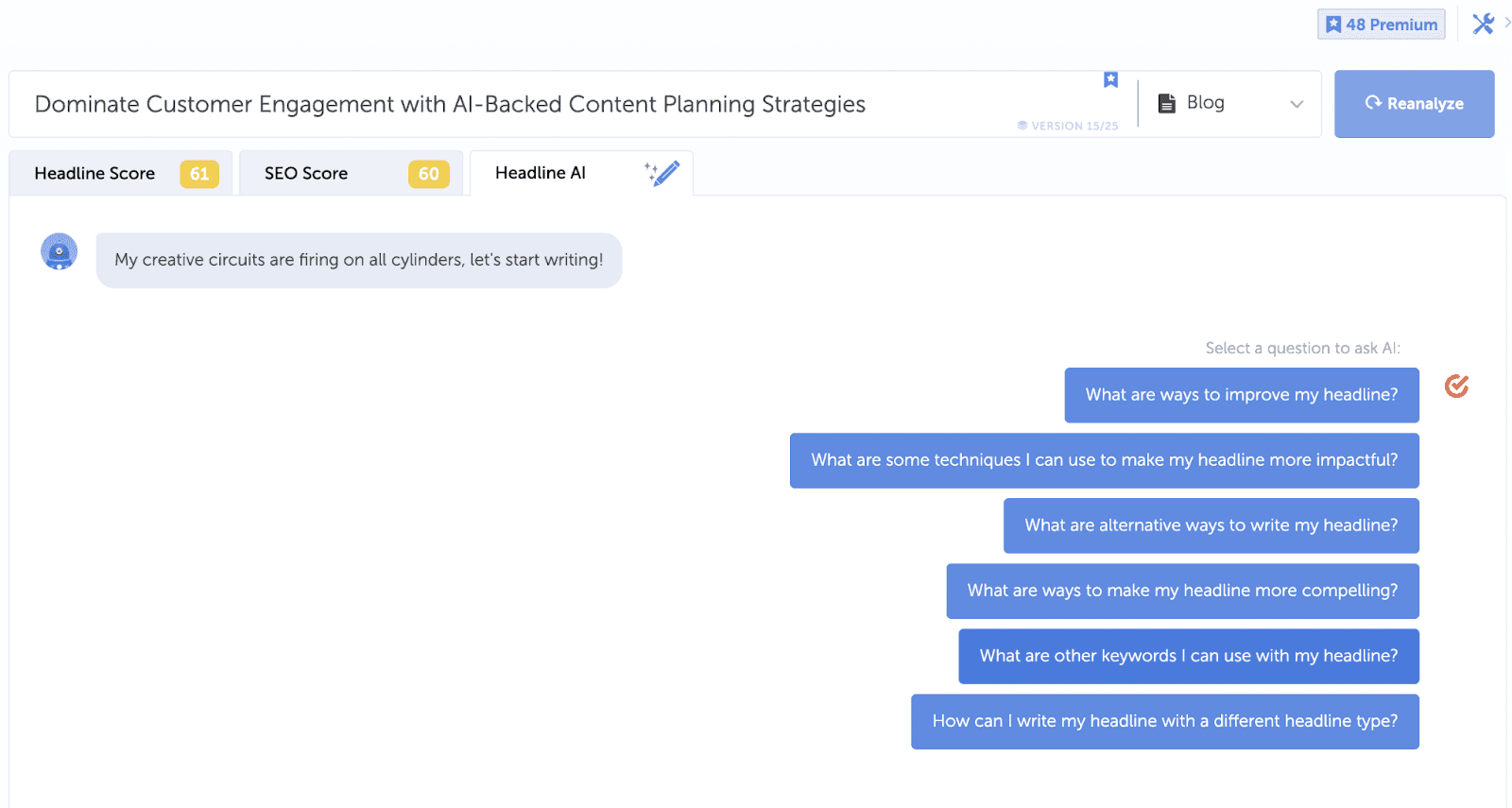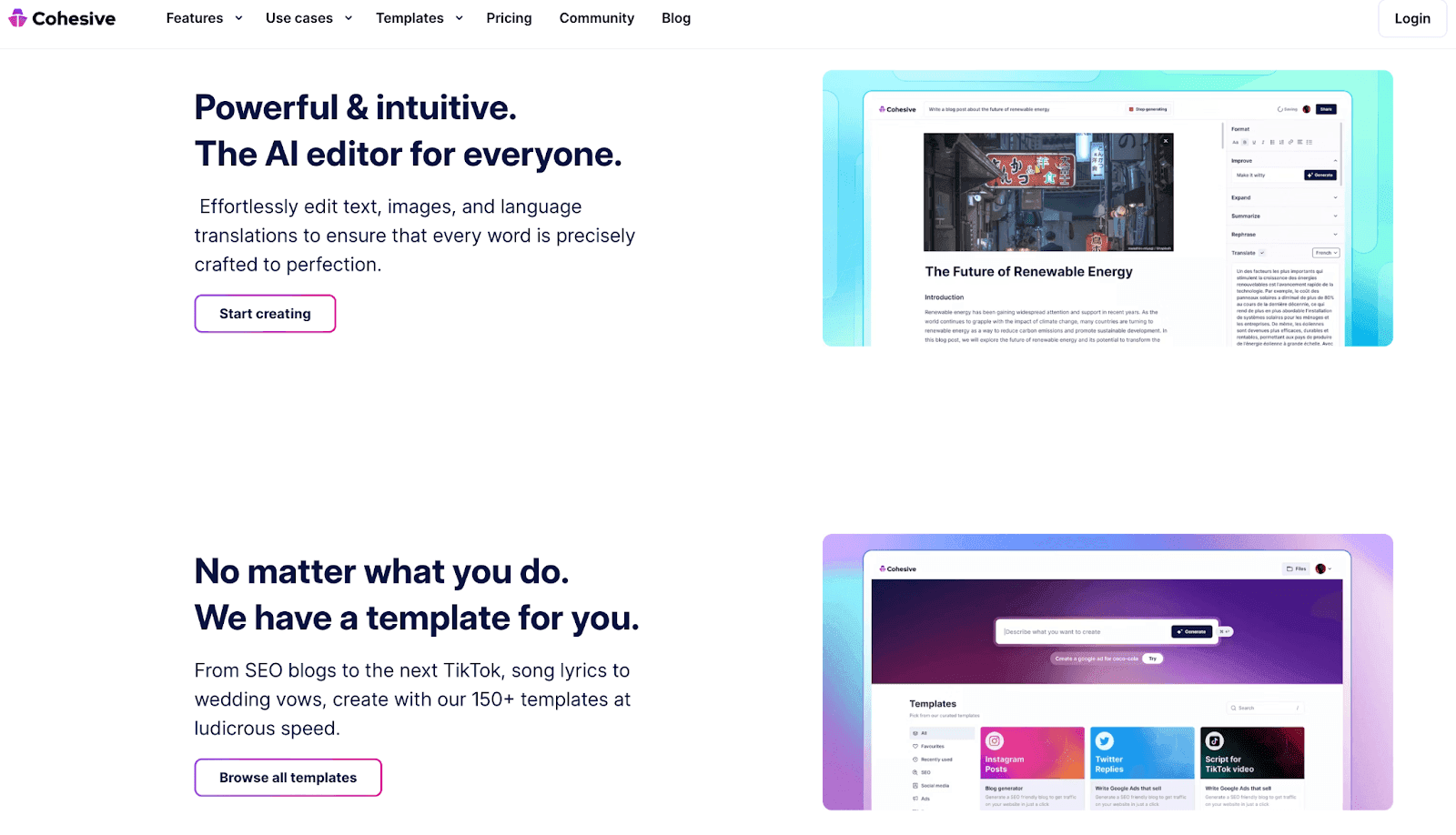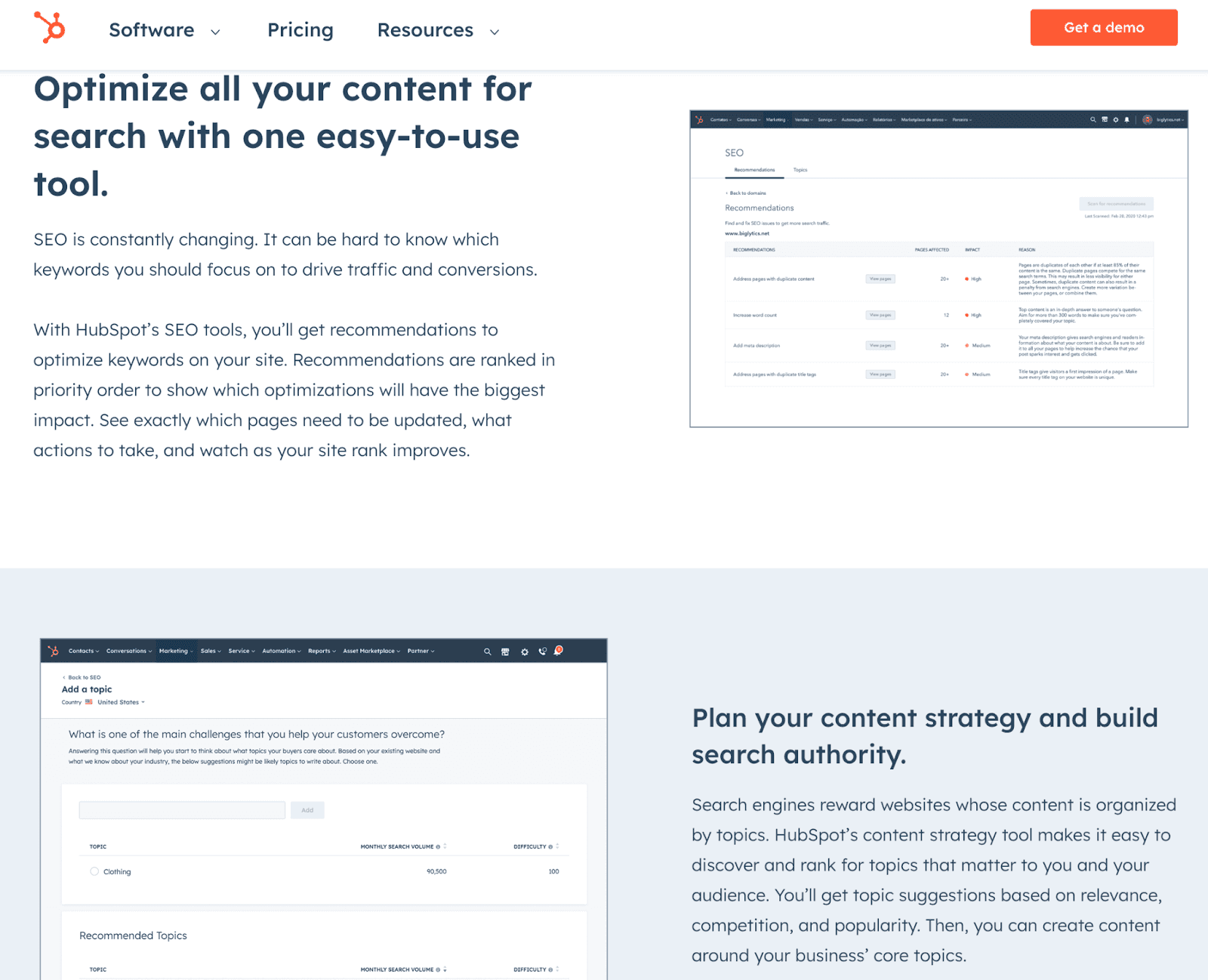Tired of spending countless hours planning and creating content for your business? Now with the help of AI, you can transform your content planning efforts, making it easier and more streamlined than ever before.
What Is AI Content Planning?
AI content planning involves using smart technology to help plan and organize your content. With AI assistance, you can look at data to find content trends, predict what content will be popular in the future, and tailor your content to specific users.
AI content planning also helps with the behind-the-scenes tasks, like finding the right keywords and scheduling posts. Basically, it’s all about making content creation easier and more effective.
Benefits Of Using AI For Your Content Planning
The typical marketer may take some time planning content in order to research, develop ideas, and ship out ranking pieces. Let’s go over some of the ways you can automate these tasks, so you can spend less time developing ideas, and more time shipping quality content.
Recommended Reading: Ai Script Generator
Streamline Your Content Creation Process
One of the primary advantages of integrating AI into your content planning is the significant reduction in manual tasks. AI-powered tools can automate various aspects of content creation, such as:
- Content Scheduling: AI can help schedule content releases at optimal times for your target audience.
- Data Entry: AI can automate data input, freeing up your team’s time for more strategic tasks.
- Social Media Posting: AI-driven tools can post content across multiple platforms, ensuring consistency.
By automating these time-consuming tasks, you can streamline your workflow and improve overall efficiency.
Enhanced Content Relevance
AI offers content personalization to analyze user data and behavior empowers you to personalize content for your audience.
For example, AI can:
- Recommend Products: E-commerce websites can use AI to recommend products based on user preferences and browsing history.
- Tailor Email Campaigns: AI can customize email content to match individual recipient interests.
- Dynamic Website Content: AI can alter website content in real-time based on visitor behavior.
Personalized content leads to higher user engagement, increased conversion rates, and improved customer satisfaction.
AI can also identify and target specific audience segments with precision. By analyzing sata, AI can determine the characteristics, preferences, and behaviors of different audience groups. You can create content that resonates with each segment, maximizing your content’s impact and reach.
Make Data-Driven Decisions
AI is a powerful tool for data analytics. It can process and interpret cast amounts of data quickly, providing valuable insights into your content’s performance.
With AI, you can:
- Track Engagement: Monitor metrics like click-through rates, bounce rates, and social media shares.
- Identity Trends: Recognize emerging trends and capitalize on them in your content strategy.
- Content Optimization: Optimize your content based on data-driven insights.
By making data-driven decisions, you can continuously improve your content strategy for better results. AI can also predict content trends and user behavior by analyzing historical data and external factors.
Predictive analytics tools can forecast:
- Content Popularity: Predict which types of content are likely to perform well in the future.
- User Behavior: Anticipate how user performances and habits may change over time.
- Demand Forecasting: Estimate the demand for specific content topics or products.
These predictive insights enable you to stay ahead of the curve and proactively adjust your content strategy.
Identify Trending Topics
AI-powered tools can continuously monitor social media, news, and online conversations to identify trending topics and discussions. By staying informed in real-time, you can create content that’s relevant and timely, boosting engagement and visibility.
AI can also analyze your existing content library and compare it to competitors or industry leaders. This analysis helps identify gaps in your content strategy, allowing you to fill them with valuable and relevant content. Closing these gaps enhances your content’s overall quality and relevance.
Analyze Competitor Content
AI can track and analyze competitor content, revealing their strategies and performance metrics. By gaining insights into your competitors’ content, you can:
- Identify Opportunities: Discover gaps in their content strategy that you can exploit.
- Benchmark Performance: Compare your content’s performance against industry benchmarks.
- Innovate Strategically: Determine areas where you can outperform your competitors.
Benchmarking your content against competitors using AI-driven analytics can provide actionable insights. By understanding your content’s strengths and weaknesses relative to the competition, you can make informed decisions to improve your content strategy.
Research Relevant Keywords
When it comes to keyword research and optimization, AI can help automate that task and make it easier. It can analyze trends, competition, and user intent to help you select the most effective keywords. By optimizing your content for these keywords, you can improve your SEO ranking and drive organic traffic.
Recommended Reading: How To Use AI For SEO: A Comprehensive Guide
Automate Content Generation
AI-powered content generation tools can assist with:
- Blog Posts: Automate the creation of blog articles on various topics.
- Product Descriptions: Generate detailed and compelling product descriptions.
- Social Media Posts: Create engaging social media content.
While there may be some content quality concerns, with proper guidance and editing, AI-generated content can be valuable addition to your content strategy.
Personalize Your Content
When it comes to personalizing your content, you can use AI to analyze user behavior on your website and track what content visitors engage with and how they navigate your site. With this information, you can deliver personalized content recommendations, enhancing the user experience and increasing engagement.
Along with this, AI can facilitate A/B testing by automatically creating content variations and analyzing their performance. This data-driven approach allows you to refine your content strategy based on real user preferences and behaviors.
Here are some of the best practices to think about when implementing AI in your content planning process.
Step 1: Identify Your Content Goals
Begin by outlining the fundamental steps to integrate AI into your content planning strategy. These may include defining your goals, assessing your current resources, and establishing a budget for AI tools and services.
Step 2: Choose The Right AI Content Planning Tools
There are many content planning tools that have AI integrated. Do research on what is most important to you when you plan and schedule your content, and pick a tool that best fits your needs, and has AI to help speed up your process. (Read further down for 6 AI-powered content planning tools.)
Step 3: Use AI To Generate Content Ideas
Depending on what tool you pick, you can use AI to generate new content ideas such as blog posts, social media messages, graphic design ideas, and many more.
For example, an individual writing a blog about ‘productivity tools for freelancers’ can use a free blog post generation tool such as Hire Mia and fill in these prompts:
Topic: The best productivity tools for freelancers.
Target Audience: Freelancers looking to optimize their workflow and manage their time better.
Tone: Friendly and helpful.

Step 4: Use AI To Optimize Your Content
We know you’re capable of coming up with content on your own, but improving it is always necessary when trying to rank on Google, and beat out competitors.
Headline Studio’s AI feature can optimize your headlines, subject lines, titles, and more by giving you a score, and telling you ways you can improve your first draft.

Simply start by entering a headline idea, and ask Headline AI to improve your headline. You can also switch over to the “Headline Score” or “SEO Score” tab to get an in-depth overview of how you can improve your headline.
Step 5: Measure Your Results
Make sure to follow up on your content, and keep track of key performance indicators (KPIs) to assess the effectiveness of your content strategy. KPIs can monitor your website traffic, track your engagement metrics, and can segment your data to gain deeper insights on what content works best for your audience.
Let’s go over some of the best AI content planning tools that you can use to revolutionize your strategy, and get more content shipped in less time.
1. CoSchedule Calendars
CoSchedule Calendars are go-to content planning tools that seamlessly plan your marketing schedule and create custom calendar views to coordinate your campaigns. Content Calendar offers social publishing, and an AI writing assistant to write and publish social messages all within your calendar.

Stay organized and execute your marketing strategy with ease—explore the AI Content Calendar today.
2. Cohesive
Cohesive is an AI editor that can assist you when writing, planning, scheduling, and publishing your content. They have several templates for you to use depending on what you are writing content for, such as a script for a YouTube video, Instagram captions, blog generators, and many more.
Cohesive can help your marketing, sales, support, or personal needs by using AI to edit your
work, generate ideas, and more.
3. Hubspot
Hubspot is another great platform that uses AI to help you with your content planning. Some of the tools this platform has is helping with SEO strategies, optimizing all your content in one place, using data to grow your website, and more.
Hubspot is a great platform to build out your content strategy and use AI to help you streamline that process.
4. HootSuite
HootSuite is a great platform for you to automate your content by using AI to improve reach and boost engagement.
Their AI tool is called OwlyWriter AI, and it can help you write and edit social messages, scan the web to make sure your content performs well against competitors, and get post and caption ideas.
OwlyWriter AI makes it easy for you to plan, write, schedule and post your content across several platforms, making your process faster and more effective from start to finish.
5. Buffer
Buffer is an AI content planning tool designed to help you schedule content. This tool can customize your content, preview posts before they go live, and even add tags and mentions.
On top of that, its AI Assistant also helps generate ideas for any kind of content a marketer may need.

Buffer offers multiple time-saving features, such as queueing posts, specific time scheduling, and image uploads and link previews.
For larger businesses, Buffer’s paid plans allow for up to 2,000 posts to be scheduled at once, making it an excellent option for both small and large-scale operations.




